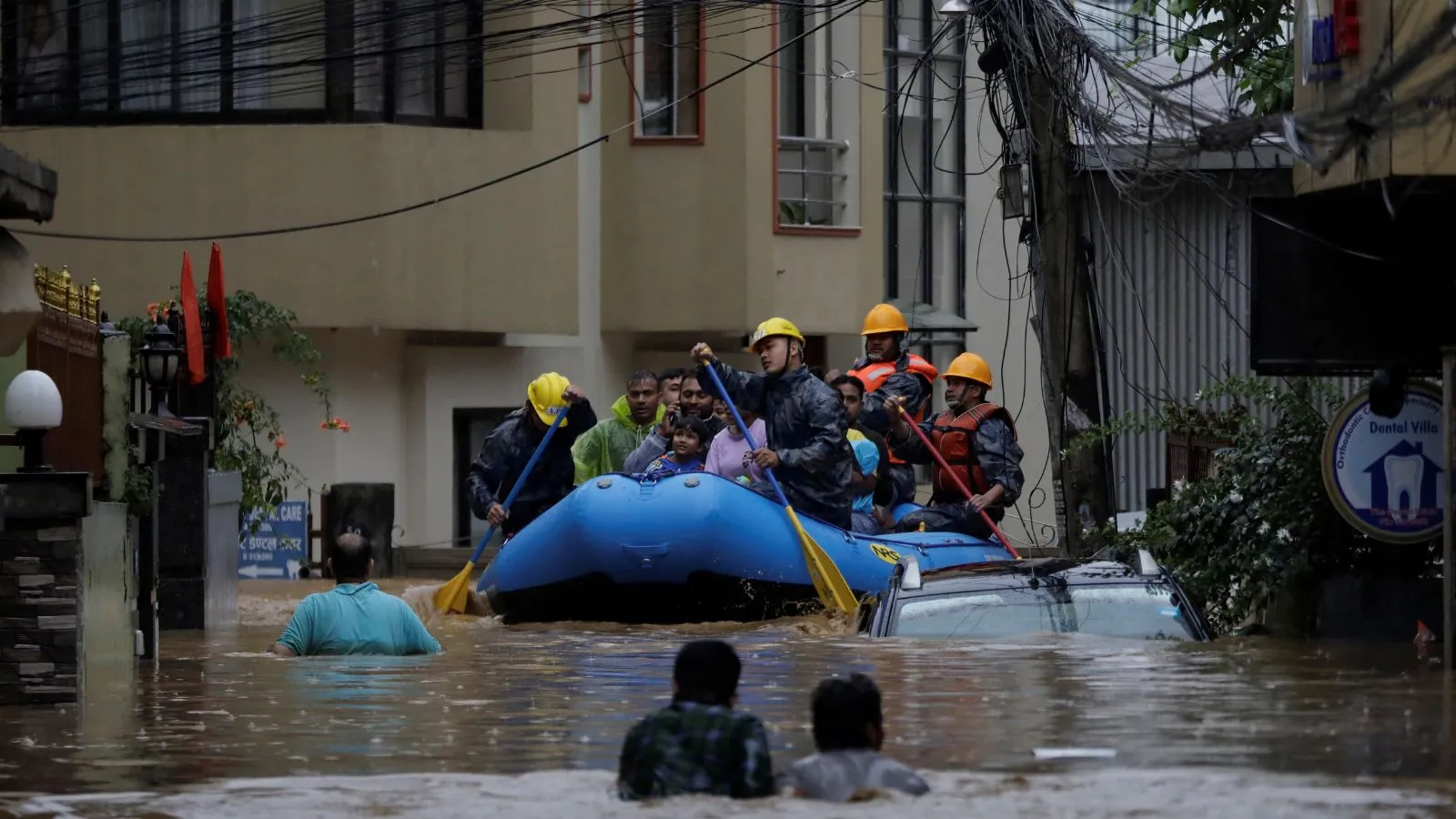Heavy rains began in Nepal on Thursday, and as of September 30, rainfall in many areas reached record levels. In the Kathmandu Valley alone, home to 4 million people, 240mm of rain fell at Kathmandu International Airport in 24 hours, the highest since 2002. The heavy rains caused flooding across the capital Kathmandu and many surrounding areas, leaving the entire Bagmati River area severely inundated.
The entire city of Kathmandu was cut off as major roads were cut off by massive landslides. At least 35 people were reported to have died in a landslide that suddenly occurred on the national highway south of Kathmandu.
Not only Kathmandu was affected, other areas in Nepal also suffered heavy damage. According to reports from Nepalese police, more than 4,500 people have been rescued from isolated areas. However, 30 people are still missing and as time goes by, the chances of finding them alive are gradually fading.
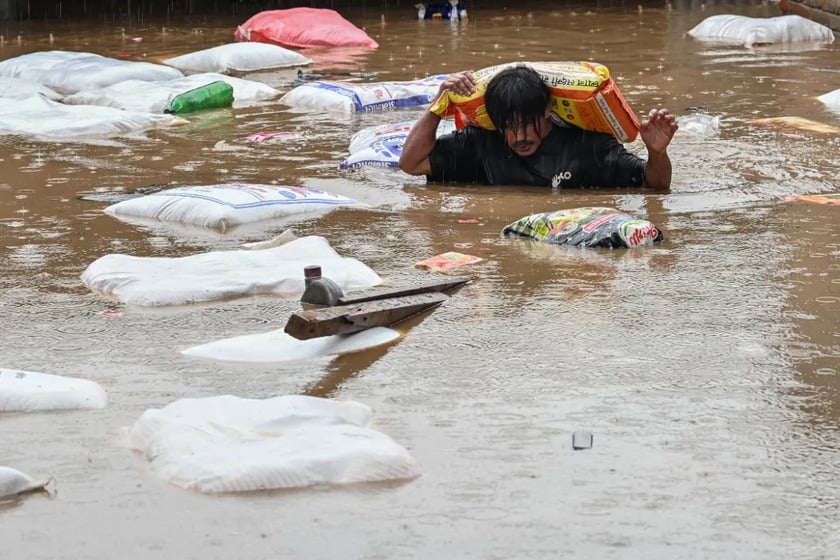
A man carries a sack of flour through floodwaters after the Bagmati River overflowed due to heavy rains in Kathmandu
The Nepalese government has mobilized all rescue forces, including the army and police, to conduct rescue operations and evacuate people from dangerous areas. A series of helicopters, boats and bulldozers have been mobilized to rescue families who are still trapped. Rescue operations are taking place urgently in areas devastated by floods and landslides.
"The current priority of the Nepalese government is to rescue people and provide assistance to those affected," Nepalese Home Minister Ramesh Lekhak told AP. International organizations are also working closely with the Nepalese government to provide emergency assistance.
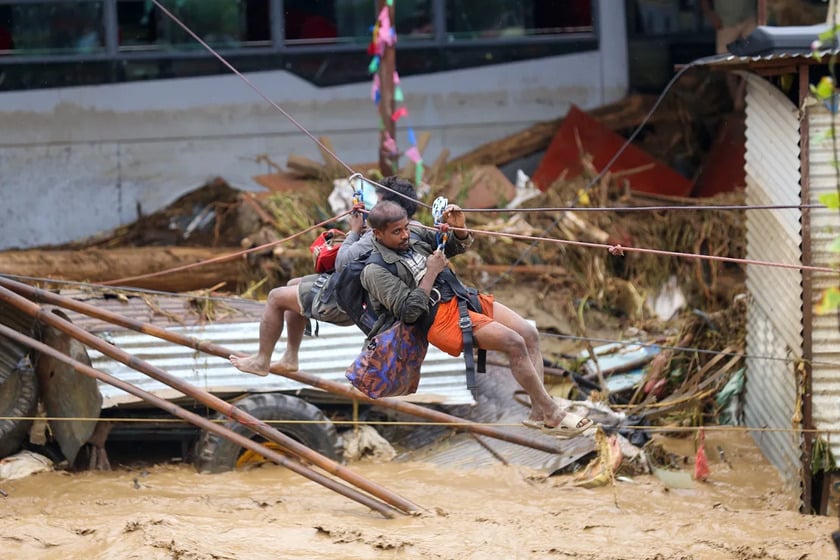
Rescuers had to use pulleys to rescue trapped people.
However, severe landslides in many areas have greatly hindered access and rescue efforts. Major roads into the capital have been blocked, making the delivery of food, provisions and relief goods more difficult than ever. Wholesale markets in Kathmandu are reporting shortages of food and vegetables due to road closures.
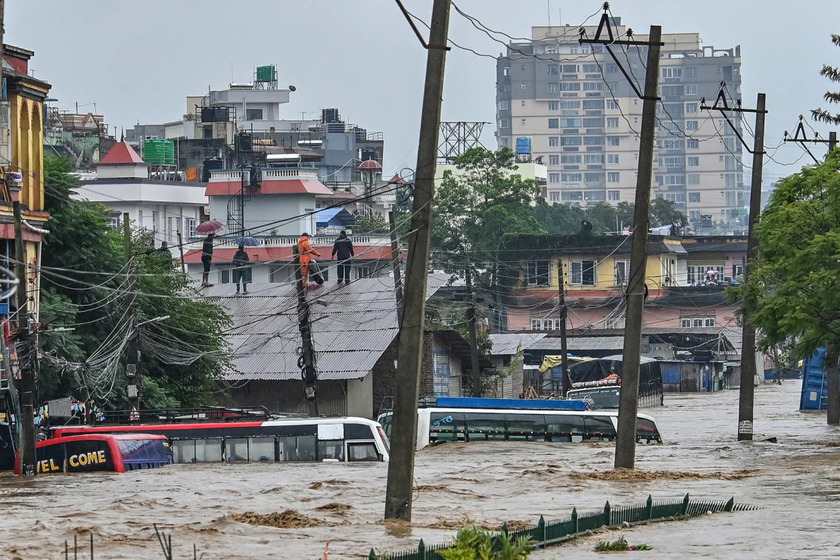
Rising floodwaters forced many people to climb onto roofs to wait for rescue.
Nepal, with its rugged mountainous terrain, is vulnerable to natural disasters such as floods and landslides during the rainy season from June to September. These monsoon rains are not only important for the country's agriculture, but also provide the main source of water for domestic and industrial activities in the region.
However, Nepal’s floods are getting worse as extreme weather events increase in frequency and severity. Climate experts point to these heavy rains as a result of global climate change. At the same time, unplanned urbanization, especially along rivers like the Bagmati River in Kathmandu, has exacerbated the damage when disasters occur.
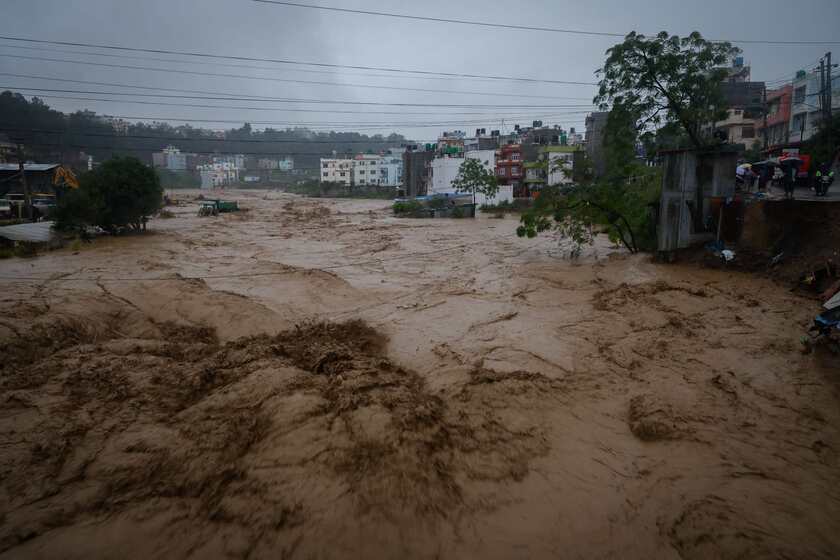
Floods are becoming increasingly unpredictable due to climate change.
Despite the hardships Nepal is facing these days, the spirit of unity of the people of this country still shines through in the rescue efforts and mutual support. With the spirit of resilience, the people of Nepal have overcome many disasters in the past, and this time, with the help of the international community, it is hoped that Nepal will soon overcome and overcome the difficulties ahead.





